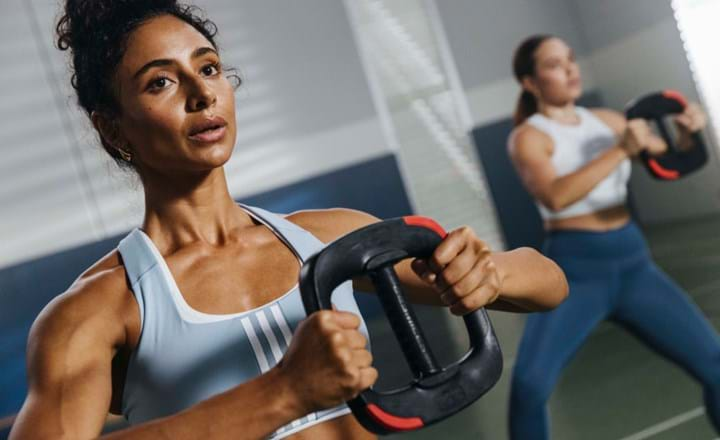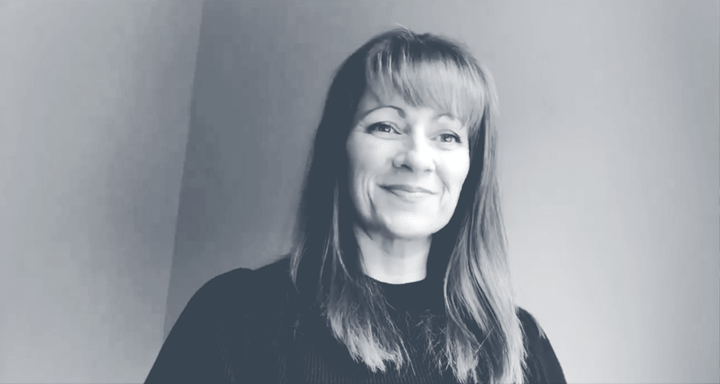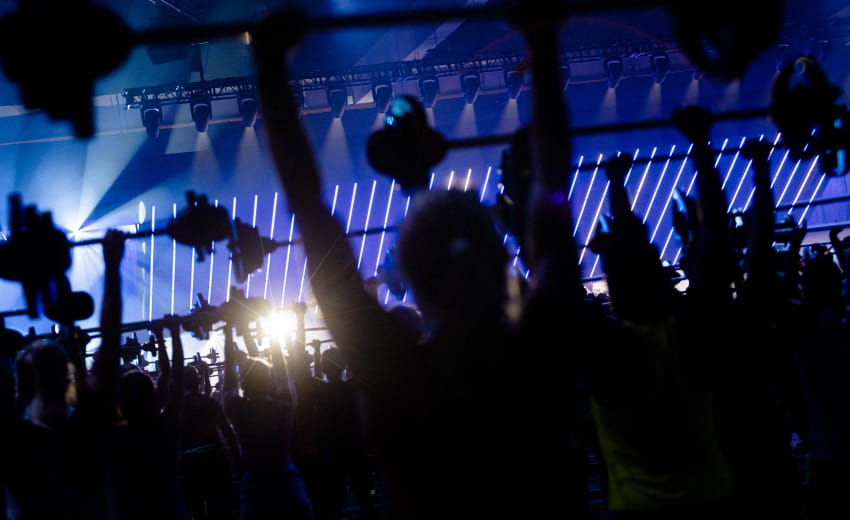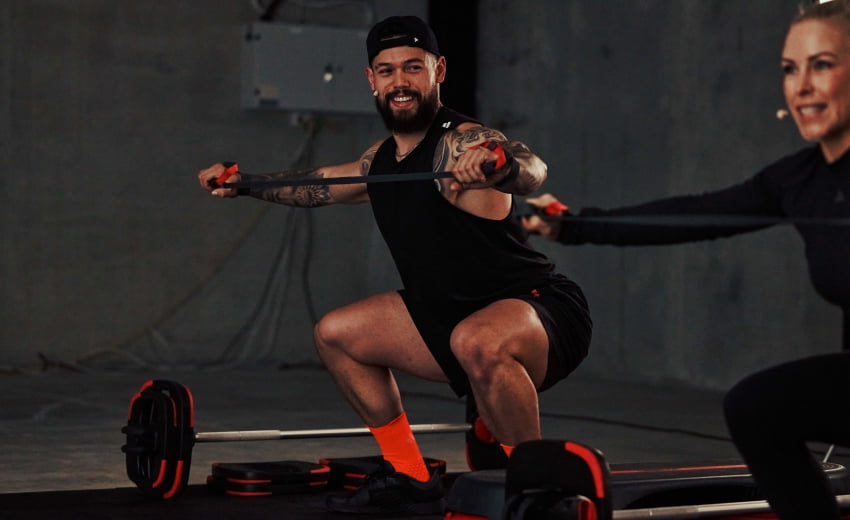
What’s your story Sarah?
Sarah Roberts (SR): I've been in the industry for over 30 years and with Places Leisure, (previously known as DC Leisure,) for 25 years. I joined the industry on a personal weight loss journey in my teens; I got into activity and thought: ‘I’d like to help others do this’. I started by becoming a group fitness Instructor and from there I made my way into management. Now I oversee the fitness strategy for Places Leisure across 80 facilities – including gym floor and group training. We’re part of Places for People – a social enterprise – and we work together to reach well beyond our facilities, delivering activity sessions in supported living and affordable housing settings, as well as outdoors in green spaces and digitally via our app. We’re committed to building our community and growing our impact by thinking far beyond the four walls of our facilities.

How would you characterize the current landscape for operators?
SR: We’ve been through a lot in the past few years, but the future looks bright. Coming back from Covid shaped our delivery model by turning our attention to the things we needed to retire. We considered the things we'd always done and asked did we want to bring those back? How could we do things differently? I think the days of people having a membership and not using it are over. People are thriving thanks to being back in social exercise environments the pattern has been sustained – we’re seeing super-engaged members and attendances are trending upwards. Swimming is through the roof for us, as is group training. My last end-of-month report saw over 70% average occupancy across the 15,000 Instructor-led classes we delivered. That's the highest percentage we’ve ever had and it takes into account every single instructor-led class across the group, including many niche offerings aimed at underserved member preferences. Plenty of our classes have long waiting lists and we could easily get the overall average even higher, but it’s important for us to be catering to the needs of as broad an audience as possible.
How are you achieving such impressive group training results?
SR: Number one: there has to be a great mix of quality programming – having a broad offering means we can reach as many members as possible. We stay on top of our occupancy by making sure members get first refusal on their favorite classes. When a class is full, you can click on ‘Notify Me’ in our app and it'll tell you when a space becomes available. It's the most one of the most popular functionalities and it makes sure our studio is full, giving our members the best live experience. Virtual is really helping us as well. It’s allowing members to get familiar with programs before they sample the thrill of the studio. Members who do a Virtual BODYPUMP™ can figure out the equipment they need and the weight they’re comfortable using with just a handful of people. It allows them to feel good about what they’re doing and gain confidence so that when they come to a big, bustling live class, they’re ready for action. And of course, teammates are key to our success: the gym team will encourage people to try a session. They’re our best motivators!
And how important is community to the modern member?
SR: It’s essential. Our model centers around the family market, and building healthy communities is a key strategic focus. We want to be a provider for everybody, which presents challenges as it means your timetable, programming, and facility mix have to suit all age demographics and goals. Your community is your shop window because as much as it's fabulous having the 15% of the population who are actively working out, we're looking to engage with the larger mid-section of the population. The ones who haven't stepped over the threshold of a fitness facility, perhaps because of perceptions or stereotypical views of what they think happens in there. So having a ready-made community to welcome them is essential so new joiners find it easy to make that step. Addressing the wider market is going to be essential to the industry’s next phase of growth and we see community as a key component.

What steps are Places Leisure taking to attract the wider market?
SR: We’re working hard to ensure our marketing is fully inclusive. We do a lot of work to attract the mid-section of the population I spoke about by using imagery that doesn’t exclude anyone from feeling welcome. We show wheelchair users and people with various disabilities using our facilities because we want to show them that whatever they want to do with us – be it pool-based, using the sports halls, group fitness or the gym – they can do it. And it sets the tone for our messaging. We focus on empowering messaging and I really like that type of marketing. I think it resonates because you can still challenge people, but you take the edge off it, and that's where people then engage, especially if it's something new. If something is new and it's serious, it can be daunting. Sometimes people will choose the path of least resistance. So I think some of the strongest branding is the stuff that doesn't take itself too seriously.
There’s a lot of industry focus on Gen Z. How are you working to attract younger members?
SR: I think there are two pieces. Firstly, we have to make sure we're recruiting a good cross-section of Instructors to welcome Gen Z in, so they feel the offerings are relevant for them. It’s also about elevating the experience so it feels unique, adapting the facilities to make them look and feel more dynamic for a new generation. We’re taking the lead from Les Mills and the expertise they provide on studio design to create multipurpose spaces where we can offer a broad range of classes, including small group training. That means paying attention to things like LED lighting and the background color of the walls. Cumulatively, these elements create the impact that will attract all members, but especially younger ones, into the studio.
How are you approaching Instructor recruitment?
SR: I think educating your in-house PTs on the value of group training is key. I've had conversations with PTs who we've identified as perfect for the studio, and they're fixated on PT. As a former personal trainer myself, I share with them how valuable it was for me to teach classes. It was one of the best ways to gain clients, because you have a whole group of people that follow you to your different classes. You get chatting with them and next thing you know you’re building trust and they’re considering you for PT, too. I think there's still a perception around choreography and the need to be to the beat, too. Of course, those programs do exist, but with bootcamps and the new generation of Les Mills programs that are off the beat, it doesn’t need to be a barrier. So it’s about really being clear on how that’s communicated and marketed as well.

Do you think motivations for joining the industry have changed?
SR: I think people are still joining the industry to make a difference, but part of the challenge is addressing the transience of leisure. It’s often seen as a stepping stone, something to do during university, or early on in people’s careers. We have to position the sector as a career where you can progress and make good money. I go back again to the PT analogy: it’s really hard to be successful as you need a lot of clients to make the type of money that people think they're going to make. So it’s about highlighting the stability offered by group training – you have a good following of people, and then you begin to gain influence and trust from your participants. From there, we can start to position a career in leisure as a marathon, not a sprint.
How has working with Les Mills helped Places Leisure be successful?
SR: Working with Les Mills means we can concentrate on delivering a great experience for our members, because we’ve got a world-class partner who keeps us ahead of the trends. We value group training as such a quality part of our offer, and there's lots of flex around how we work with Les Mills to choose new content to get the best for our members. Every facility wants a crystal ball that reveals the answer to the eternal challenge of what's the right thing to do to reach as many people as possible. Working with Les Mills enables us to lean on all of the insights and expertise and not worry about having to do everything ourselves. And the fact that Les Mills is such a strong brand means our members and prospects know the level of quality to expect from our classes – and it keeps them coming back.
READY TO UNLEASH YOUR NEXT GENERATION OF MEMBERS?
Les Mills has crafted a new series of programs to meet the specific demands of Gen Z and put your club in the fast-lane for growth.
DISCOVER MORE
